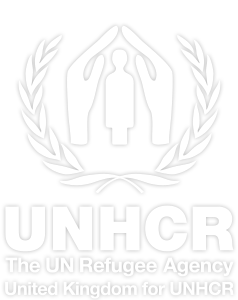Horn of Africa Emergency – Floods Relief Funding
Torrential rains across the East and Horn of Africa have claimed hundreds of lives and washed away homes, uprooting thousands of people including refugees and other previously displaced people.
Over 990,000 people have been affected across the region. More than 550,000 have been displaced from their homes.
© UNHCR/Eugene Sibomana
Horn of Africa flooding emergency
Torrential rains across the East and Horn of Africa have claimed hundreds of lives and washed away homes, uprooting thousands of people including refugees and other previously displaced people.
Over 1.1 million people have been affected across the region, with more than 550,000 displaced from their homes.
© UNHCR/Eugene Sibomana
People in Somalia, Burundi, Rwanda, South Sudan, Sudan and Kenya are struggling against the devastating impact of the climate crisis and ripple effects of the war in Ukraine, including a rise in global food prices.
Help us provide lifesaving support to displaced families who are on the frontlines of climate change.

Emergency shelter
to protect a family from the harsh elements.

Cash assistance
to help displaced people access food and social services.

Essential items
like sleeping mats, soap and sanitary napkins.
What’s happening in the Horn of Africa?
Through March and April, unusually heavy rains linked to the El Niño weather system fell across East Africa and the Great Lakes region, causing rivers to burst their banks, dams to collapse, and sewage and wastewater systems to be overwhelmed.
Climate change is making this part of the world increasingly hard to live in – causing deep droughts followed by intense rains to become the ‘new normal’. Refugees and displaced people are particularly vulnerable since many live in temporary or semi-permanent shelters, often in remote locations.
Most recently in Kenya, Burundi and Somalia, houses, schools and community buildings have been damaged or washed away, along with livestock and crops – leaving people facing an increasing risk of hunger and disease outbreaks. Hundreds of thousands of refugees, internally displaced people (IDPs) and people in host communities have been affected. Some of the worst damage has been done in the poorest, most congested parts of cities and towns, where infrastructure is fragile, drainage inadequate and homes flimsy, as well as in refugee and displacement camps.
With above-normal rainfall forecasted from June to September 2024, the situation is expected to dramatically worsen, posing a grave risk to 5.6 million people by the year’s end.
UNHCR has maintained a decades-long presence in the region, helping governments to coordinate refugee responses and supporting IDPs. Securing resources is crucial to sustain the current response and prepare for further flooding expected in the second half of 2024.
Why is there flooding in the region?
The climate crisis is triggering extreme weather events such as storms, wildfires and floods around the world, but their effects are felt most strongly by the poorest and most vulnerable people.
The torrential rains hitting the East and Horn of Africa are part of an emerging global pattern of extreme weather, coming just months after heavy rainfall and flooding late last year that itself followed long months of drought. The cumulative effect is to make parts of the region increasingly unliveable, forcing people to flee.
Where are people in the Horn of Africa fleeing to?
With conflict flaring, the climate changing, livelihoods decimated and prices rising, more people are now being forced to flee – both internally and across borders. This is having a devastating impact on existing refugees and internally displaced people in Somalia, Ethiopia and Kenya, and on their host communities.
As of 31 July, 2024, there are over 5.4 million refugees and asylum-seekers in the East and Horn of Africa and the Great Lakes Region. Uganda generously hosts over 1.7 million refugees and asylum-seekers. There are also significant numbers of people seeking sanctuary in Ethiopia, Kenya, South Sudan and the United Republic of Tanzania, among other countries.
Many of the host countries are also affected by climate disasters and conflict, leaving millions of people internally displaced. For example, Sudan hosts 900,000 million refugees and asylum-seekers, whilst over 7.9 million people inside Sudan are internally displaced. There are now more than 21 million internally displaced people across the region.
As climate disasters, insecurity and conflict continue in the region, UNHCR estimates that the number of people forced to flee will increase.
How is the war in Ukraine impacting the Horn of Africa?
Due to the humanitarian crisis in Ukraine, the cost of food staples, including grain, have risen significantly. The price of food has already risen by 66% in Ethiopia and by 36% in Somalia, leaving many refugees and internally displaced families unable to afford the most basic of items. This has forced some to sell personal valuables in exchange for food and other lifesaving items. Humanitarian needs are growing fast, and people’s lives are at stake, while funding remains staggeringly low.
What kind of relief is UNHCR is providing?
UNHCR is working closely with local authorities and partners, rushing crucial aid and providing protection services to refugees and affected communities living nearby.
Across Burundi and Tanzania UNHCR is providing shelter support, whilst in Kenya and Somalia UNHCR is providing core relief items such as blankets, sleeping mats and jerry cans.
UNHCR has recently announced a $100 million UNHCR Climate Resilience Fund. The fund will reduce the environmental impact of emergency responses, provide sustainable resources and clean energy for refugees and displaced people, and help equip them to withstand future shocks.
UN High Commissioner for Refugees Filippo Grandi said, “The impacts of climate change are only becoming more devastating, increasingly exacerbating conflict, destroying livelihoods and, ultimately, triggering displacement.”
How are the floods impacting women and girls specifically?
While the impacts of climate change are felt by everyone, it’s those in the most precarious situations, including women and girls, who bear the brunt of climate shocks.
Climate change in regions like the Horn of Africa amplifies existing inequalities, poverty and drives displacement, making refugee women and girls even more vulnerable. Women face greater health and safety risks as water and sanitation systems become comprised.
Also, women and girls are less likely to have access to education, finance and natural resources necessary for survival. Lack of resources means women get trapped in areas where climate and disaster risk is high.
Where can I access the latest data and reports?
The East and Horn of Africa, and the Great Lakes Situation Portal – for the latest updates on the crisis overall, including UNHCR situation reports, funding requirements and UNHCR’s operations in the region.

